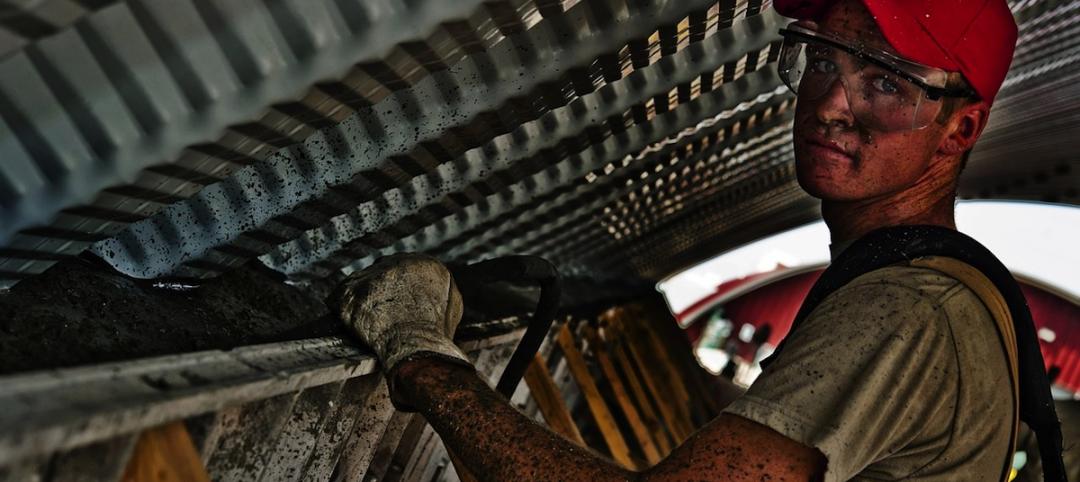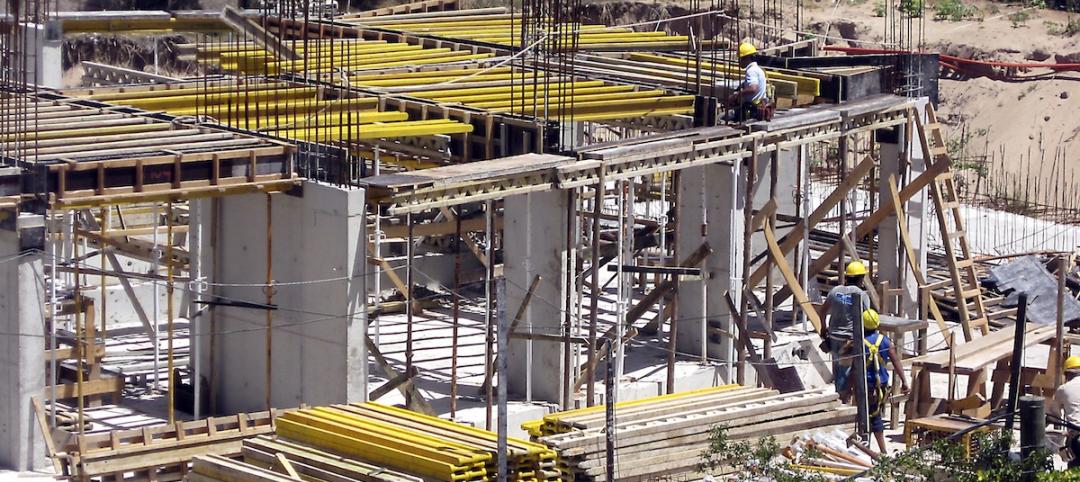Nonresidential construction spending fell 0.4% on a monthly basis in March, according to analysis of U.S. Census Bureau data released today by Associated Builders and Contractors (ABC), but it was up 8.3% on a year-over-year basis to $695.7 billion. Eight of 16 nonresidential construction subsectors experienced monthly spending growth in March and twelve are up on a year-ago basis.
March would have recorded a monthly spending gain were it not for an upward revision to February's data (from $690.3 to $698.4 billion).
"Viewed optimistically, one can conclude that nonresidential construction has stabilized at a high level," said ABC Chief Economist Anirban Basu. "While the last several months have failed to deliver significant spending growth, many contractors indicate that they remain busy and that backlog levels are satisfactory. Still, one might have expected better spending growth performance given the combination of steady job growth nationally, large sums of capital coming from abroad and invested in the U.S. and surprisingly low interest rates.
"Based on recent trends, one concludes that many U.S. corporations remain reluctant to invest in large-scale projects," said Basu. "Nonresidential fixed investment has generally been soft over recent quarters, and has subtracted from GDP growth recently. America has been experiencing a corporate profits recession recently and slow growth. GDP expanded less than 2% on an annualized basis during last year's final quarter and less than 1% during this year's first. Combine that with hesitant government agencies, and one lacks a recipe for healthy nonresidential construction spending growth."
Spending has increased in 12 of the 16 construction subsectors over the past year. Three of the four sectors registering spending declines over that time — water supply, conservation and development, and public safety — rank among the four smallest subsectors. Each of these subsectors is also heavily influenced by public sector capital budgets.

Eight of 16 nonresidential construction sectors experienced spending increases in March on a monthly basis:
- Lodging-related spending was up 1% from February 2016 and is up 27.7% from March 2015;
- Health care-related spending expanded 1.6% month-over-month and is up 4.1% year-over-year;
- Commercial-related construction spending rose 1.2% for the month and 14.5% over the last year;
- Conservation and development-related spending was 1.6% higher on a monthly basis, but is 3.3% lower on a year-over-year basis.
- Spending in the religious category grew 5.2% for the month and is up 6.4% from March 2015.
- Manufacturing-related spending gained 2% on a monthly basis, but is down 2.1% on a year-over-year basis.
- Communication-related spending grew 3.7% month-over-month and has expanded 10.4% year-over-year.
- Spending in the highway and street category expanded 0.5% from February and is 18.8 higher than one year ago.
Spending in eight of the nonresidential construction subsectors fell in March on a monthly basis:
- Spending in the amusement and recreation category fell 1% from February, but is up 9.6% from the same month one year ago.
- Education-related construction spending fell 0.6% on a monthly basis, but has expanded 11.8% on a yearly basis.
- Sewage and waste disposal-related spending fell 4.2% for the month, but is up 3.8% from the same time one year ago.
- Spending in the power category was down 3.2% from February, but is up 0.8% from a year ago.
- Water supply-related spending fell 1.6% on a monthly basis and has declined 6.1% on a yearly basis.
- Spending in the office category declined 1.3% from February, but is up 19.5% on a year-ago basis.
- Transportation-related spending fell 2.1% month-over-month and has expanded 1.2% year-over-year.
- Public safety-related spending is down 7.8% for the month and 12.3% from March 2015.
Related Stories
Contractors | May 8, 2015
Trends in U.S. commercial building size in three charts
A new study by the U.S. Energy Information Administration shows that there were 5.6 million commercial buildings in the U.S. in 2012, totaling 87 billion sf of floor space. This is a 14% increase in floor space since 2003.
Building Team | May 8, 2015
Construction industry adds 45,000 jobs in April
The construction industry saw an increase in jobs during the month of April after losing approximately 9,000 positions in March.
Building Team | May 8, 2015
Surety bond forms specifically for design-build projects now available
The documents are the first of their kind to be coauthored by designers and builders.
Engineers | May 6, 2015
Megadeals drive mergers and acquisitions in engineering and construction industry: FMI report
Large deals and the convergence of design and construction are spurring M&A activity in the engineering and construction industry, according to the FMI Mergers & Acquisitions Trends report.
High-rise Construction | May 6, 2015
Parks in the sky? Subterranean bike paths? Meet the livable city, designed in 3D
Today’s great cities must be resilient—and open—to many things, including the influx of humanity, writes Gensler co-CEO Andy Cohen.
Contractors | May 1, 2015
Construction workers among top U.S. drug users: study
Construction workers are topped only by miners when it comes to heavy drinking, according to a new study by the Substance Abuse and Mental Health Services Administration.
Multifamily Housing | May 1, 2015
Trade groups extend campaign to promote apartment living
The groups claim that there are more than 37 million Americans—12% of the population—living in just under 20 million apartment units nationwide. Apartments and their residents contribute $1.3 trillion annually to the economy.
Contractors | May 1, 2015
Nonresidential fixed investments fall in latest Construction Economic Update
This is the first time that nonresidential fixed investment declined since the first quarter of 2011, ABC reported. Nonresidential fixed investment had been rising by more than 4% on an annualized basis during five of the previous six quarters.
Contractors | Apr 29, 2015
Construction costs are expected to remain soft through fall of 2015
Labor and materials haven’t appreciated this year through April, according to market analyst IHS.
Contractors | Apr 23, 2015
Leopardo releases 2015 Construction Economics Outlook
Low oil prices have reduced the cost of construction, but not enough to offset the rise in labor costs, according to Leopardo's new outlook report.

















